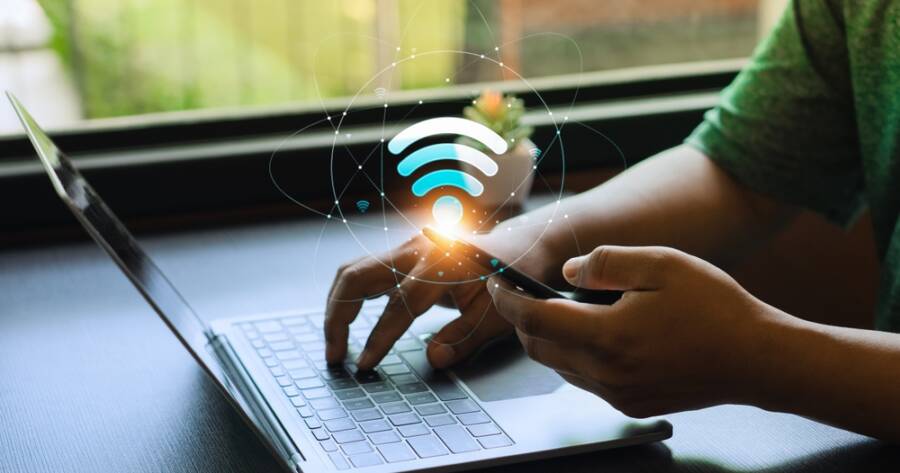A fast and reliable Wi-Fi connection is more than just a convenience—it’s essential for work, entertainment, and staying connected. But what happens when your connection slows to a crawl? Before considering an upgrade or calling your provider, there are several straightforward steps you can try to enhance your Wi-Fi speed. Practical tips can improve your connection without needing advanced technical knowledge or costly solutions.
Understand the Causes of Slow Wi-Fi
Before diving into fixes, it’s helpful to identify what might be causing the slowdown. Several factors can affect Wi-Fi speed, such as:
- Router placement: Obstructions like walls, furniture, or appliances can interfere with Wi-Fi signals.
- Device overload: Too many devices connected to your network can lead to congestion.
- Outdated equipment: Older routers may not support modern internet speeds.
- Interference: Other electronic devices, like microwaves or baby monitors, can disrupt your signal.
- Service provider issues: Your internet plan might not support high-speed connections, or there may be outages.
By pinpointing the source, you can take targeted action to address the issue.
Optimize Your Router’s Placement
Where you place your router plays a significant role in the strength and reach of your Wi-Fi signal. Ideally, the router should be:
- Centralized: Position the router in the center of your home to evenly distribute the signal.
- Elevated: Place it on a shelf or wall mount, away from the floor.
- Free of obstructions: Avoid placing it near large furniture, thick walls, or electronic appliances.
- Away from interference: Keep it at a distance from microwaves, cordless phones, and Bluetooth devices.
Experimenting with the placement of your router can lead to noticeable improvements in your Wi-Fi speed.
Update Your Equipment
Old equipment can bottleneck your internet speed, even if you have a fast service plan. Consider these upgrades:
- Upgrade your router: If your router is more than five years old, it may lack support for modern Wi-Fi standards like Wi-Fi 5 or Wi-Fi 6.
- Use a mesh network: For larger homes, a mesh Wi-Fi system can provide better coverage by using multiple nodes to distribute the signal.
- Check for firmware updates: Updating your router’s firmware ensures it has the latest security patches and performance improvements.
If new equipment isn’t in your budget, even a simple reboot of your router can sometimes restore better performance.
Reduce Network Congestion
Too many connected devices can slow down your Wi-Fi, especially during peak hours. Here’s how to manage this:
- Disconnect unused devices: Turn off Wi-Fi on devices you’re not actively using.
- Prioritize devices: Some routers allow you to set priority for specific devices, ensuring they get a larger share of bandwidth.
- Schedule downtime: If multiple people are using Wi-Fi for streaming, gaming, or video calls, try staggering activities to reduce competition for bandwidth.
For homes with many devices, upgrading to a dual-band or tri-band router can also help distribute traffic more efficiently.
Change Your Wi-Fi Channel
Wi-Fi routers operate on specific channels, and if too many neighbors are using the same channel, it can lead to interference. To address this:
- Check channel usage: Use a Wi-Fi analyzer app to determine the least crowded channel in your area.
- Switch channels: Access your router’s settings to change to a less congested channel. This is often found under the “Wireless Settings” section.
Switching channels can be particularly helpful in densely populated areas where multiple networks overlap.
Use Signal Boosters or Extenders
If parts of your home experience weak or no signal, a Wi-Fi extender or booster can help. These devices amplify your router’s signal to reach further distances. Before purchasing, ensure compatibility with your existing router and place the extender halfway between your router and the dead zone for optimal results.
For those on a tight budget, adjusting your router’s antenna (if it has one) or even creating a DIY foil reflector can sometimes improve range.
Secure Your Network
An unsecured network isn’t just a security risk—it can also slow down your connection if unauthorized users are accessing it. Protect your network by:
- Using a strong password: Ensure your Wi-Fi is protected with a strong, unique password.
- Enabling WPA3 encryption: If your router supports it, switch to WPA3 encryption for improved security and performance.
- Regularly monitoring connected devices: Check your router’s admin panel to see what devices are connected and block any you don’t recognize.
Keeping your network secure can prevent unauthorized access and free up bandwidth.
Consider Professional Help
If none of these tips significantly improve your Wi-Fi speed, it may be time to consult a professional or contact your internet service provider (ISP). They can:
- Conduct diagnostics: ISPs can identify external issues like damaged lines or network congestion.
- Recommend upgrades: They may suggest a higher-tier plan or newer equipment.
- Offer technical support: Some ISPs provide on-site visits to optimize your setup.
While professional help may involve additional costs, it could save time and frustration in the long run.
Speed Up Your WiFi
Slow Wi-Fi doesn’t have to disrupt your day-to-day life. By understanding potential causes and trying these simple fixes—like optimizing router placement, reducing network congestion, and updating your equipment—you might see noticeable improvements in your connection.
If these steps don’t resolve the issue, more advanced options, like mesh networks or professional diagnostics, could be worth exploring. Remember, every home setup is different, so finding the right solution often involves some trial and error. With a little effort, faster and more reliable Wi-Fi might just be within your reach.

